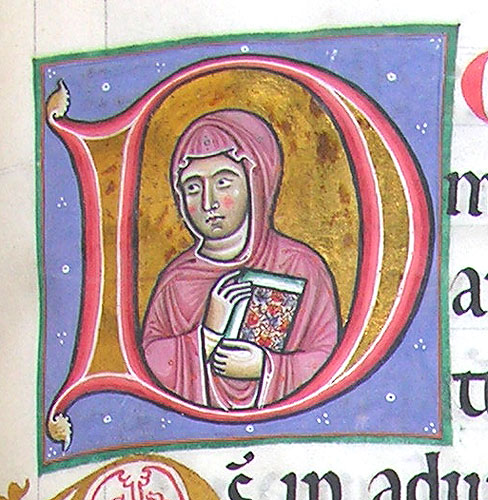Euphemia De Walliers on:
[Wikipedia]
[Google]
[Amazon]
Euphemia de Walliers (1100s – 26 April 1257) was a
 Her predecessor, Maud/Matilda de Bailleul, had reestablished the abbey after it was burned during
Her predecessor, Maud/Matilda de Bailleul, had reestablished the abbey after it was burned during
Benedictine
, image = Medalla San Benito.PNG
, caption = Design on the obverse side of the Saint Benedict Medal
, abbreviation = OSB
, formation =
, motto = (English: 'Pray and Work')
, foun ...
nun of Flemish descent who became the abbess of Wherwell Abbey
Wherwell Abbey was an abbey of Benedictine nuns in Wherwell, Hampshire, England.
Foundation
The nunnery was founded about 986 by Ælfthryth, the widow of King Edgar. She retired there to live a life of penance for her part in the murders of ...
. She is known for building and rebuilding at the abbey whilst the number of nuns rose by 40 to 80 during her management.
Life
Her mother was Margaret de Walliers and her father is considered to be Theodore de Walliers although her birthplace and birthday are unknown. In 1212 she was a nun atWherwell Abbey
Wherwell Abbey was an abbey of Benedictine nuns in Wherwell, Hampshire, England.
Foundation
The nunnery was founded about 986 by Ælfthryth, the widow of King Edgar. She retired there to live a life of penance for her part in the murders of ...
when her aunt, Matilda de Bailleul
Matilda de Bailleul aka Maud (c.1132 – 14 December, 1212) was a Flemish abbess of the English Wherwell Abbey. She arrived in 1173 and transformed the abbey that had few nuns following damage done by William of Ypres years before. She annotated ...
, died. Her aunt had been the abbess and de Walliers was elected as her replacement. She became head of an abbey with four prebends with forty nuns and she was also given a psalter which had belonged to her predecessor. The Saint Bertin psalter is still extant and Euphemia was the second abbess to add annotation and details to it. This is why the name of her mother is known and her father's name can be implied.
 Her predecessor, Maud/Matilda de Bailleul, had reestablished the abbey after it was burned during
Her predecessor, Maud/Matilda de Bailleul, had reestablished the abbey after it was burned during the Anarchy
The Anarchy was a civil war in England and Normandy between 1138 and 1153, which resulted in a widespread breakdown in law and order. The conflict was a war of succession precipitated by the accidental death of William Adelin, the only legiti ...
in 1141. de Walliers devoted her time to reconstructing buildings.
Euphemia seems to have been a veritable whirlwind. As the surviving cartulary records. Euphemia built a new farmery, dorter and latrines with running water, all away from the main buildings, and nearby a chapel of the Blessed Virgin, with a large enclosed garden. By the river bank, she constructed other buildings leaving access to the river for the nuns. She cleared older buildings and built a new hall for the manor court, and further away a new efficient mill. She completely rebuilt the dilapidated manor house at Middleton, and she took similar measures at Tufton. She was attentive to charitable works and in providing hospitality.
She embellished the Norman church that had replaced the original Saxon church with crosses, reliquaries, precious stones, vestments, and books. When the decaying bell tower collapsed on to the dorter in the early hours, narrowly missing the nuns, she built a tall and handsome replacement that matched the remaining buildings and in her old age she had dismantled and rebuilt with 12-foot deep foundations the sanctuary of the church.
Death and legacy
She died on 26 April 1257 and it is presumed that she was buried in the Abbey's church. de Walliers had added details of her relatives' obituaries and prayers to the psalter given to her by her predecessor, Matilda. The psalter continued to be passed down and it is now inSt John's College, Cambridge
St John's College is a Colleges of the University of Cambridge, constituent college of the University of Cambridge founded by the House of Tudor, Tudor matriarch Lady Margaret Beaufort. In constitutional terms, the college is a charitable corpo ...
.
References
{{DEFAULTSORT:Walliers, Euphemia de 1100s births 1257 deaths Benedictine abbesses English Roman Catholic abbesses 13th-century English women 13th-century English people